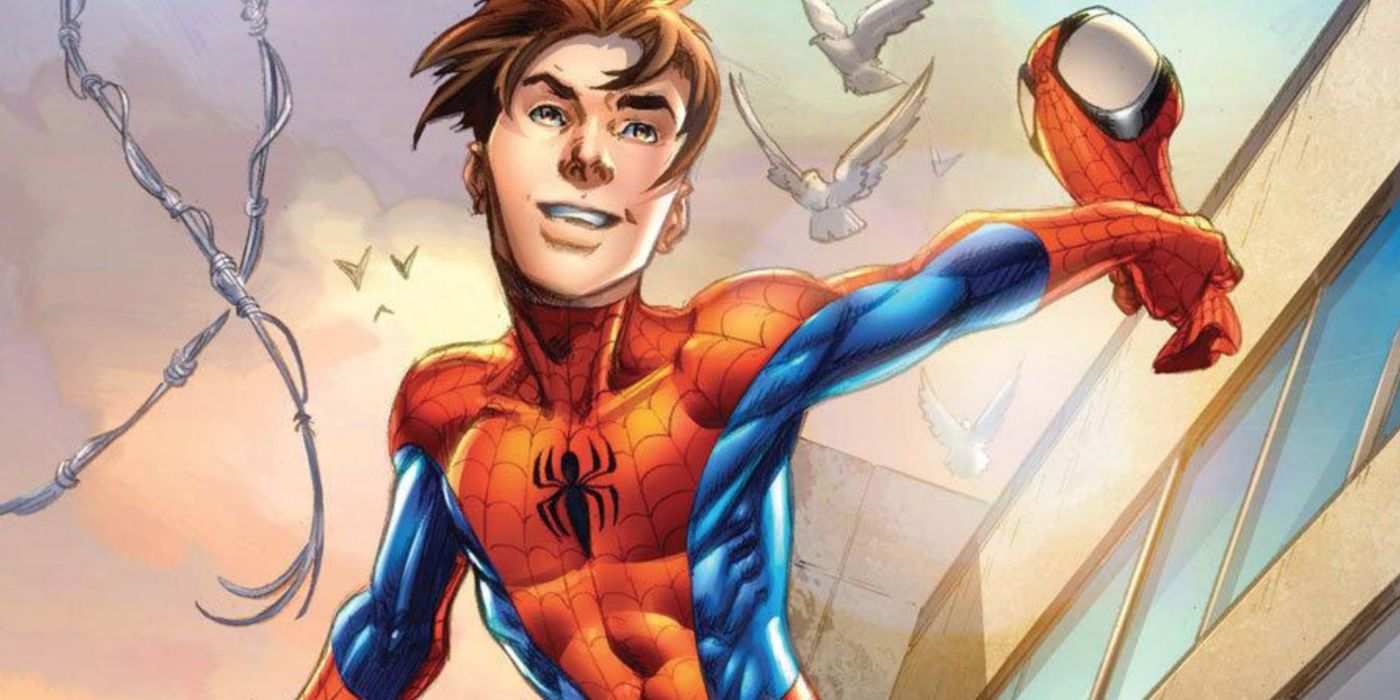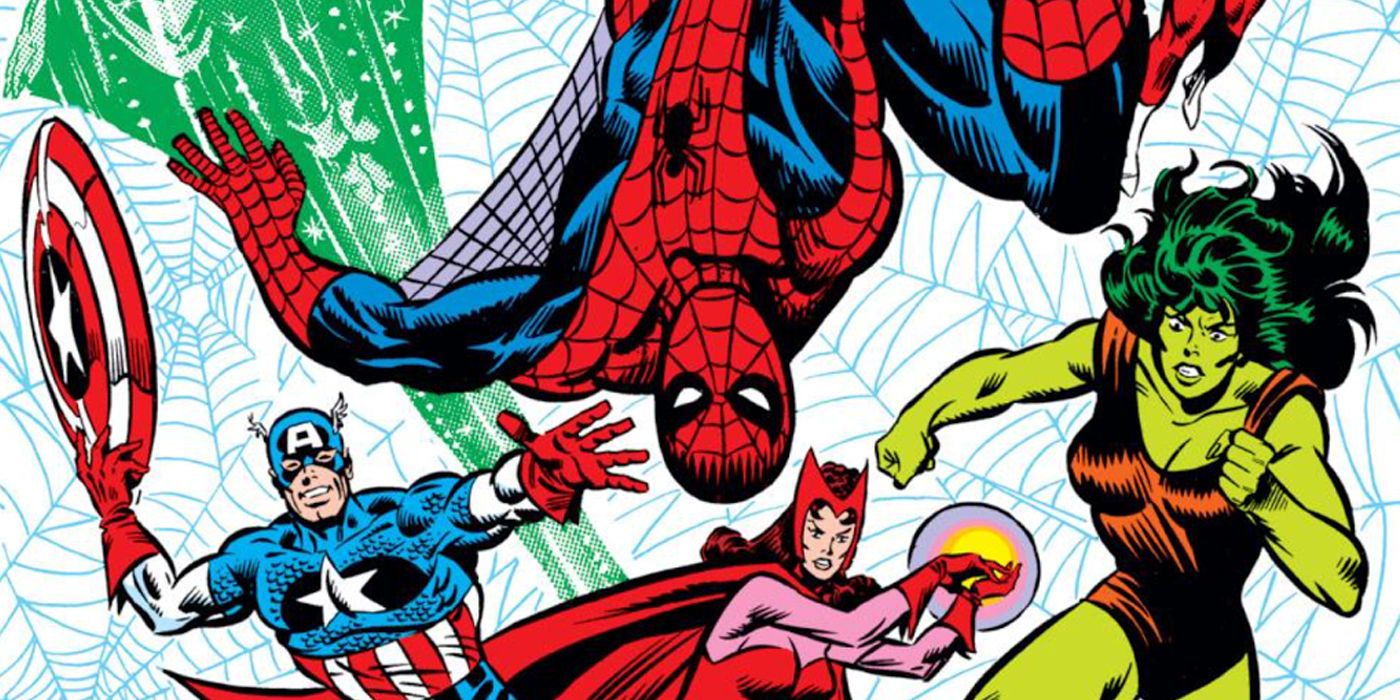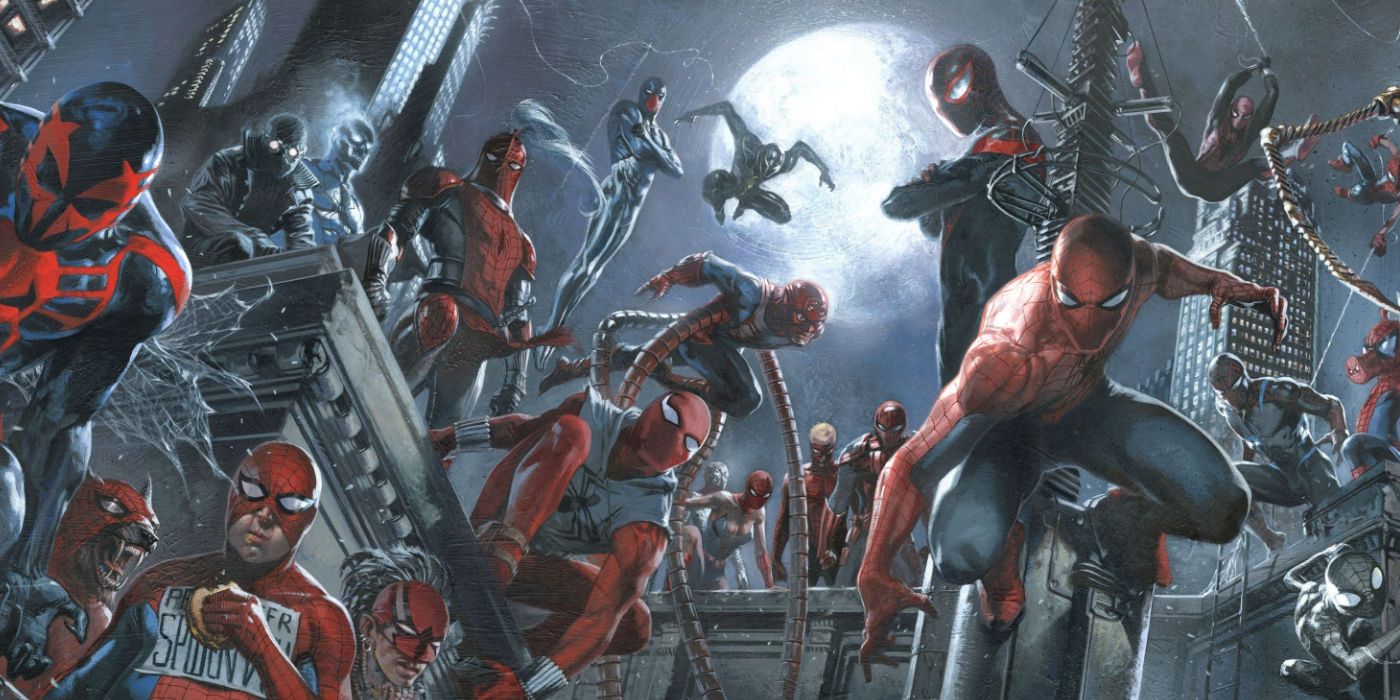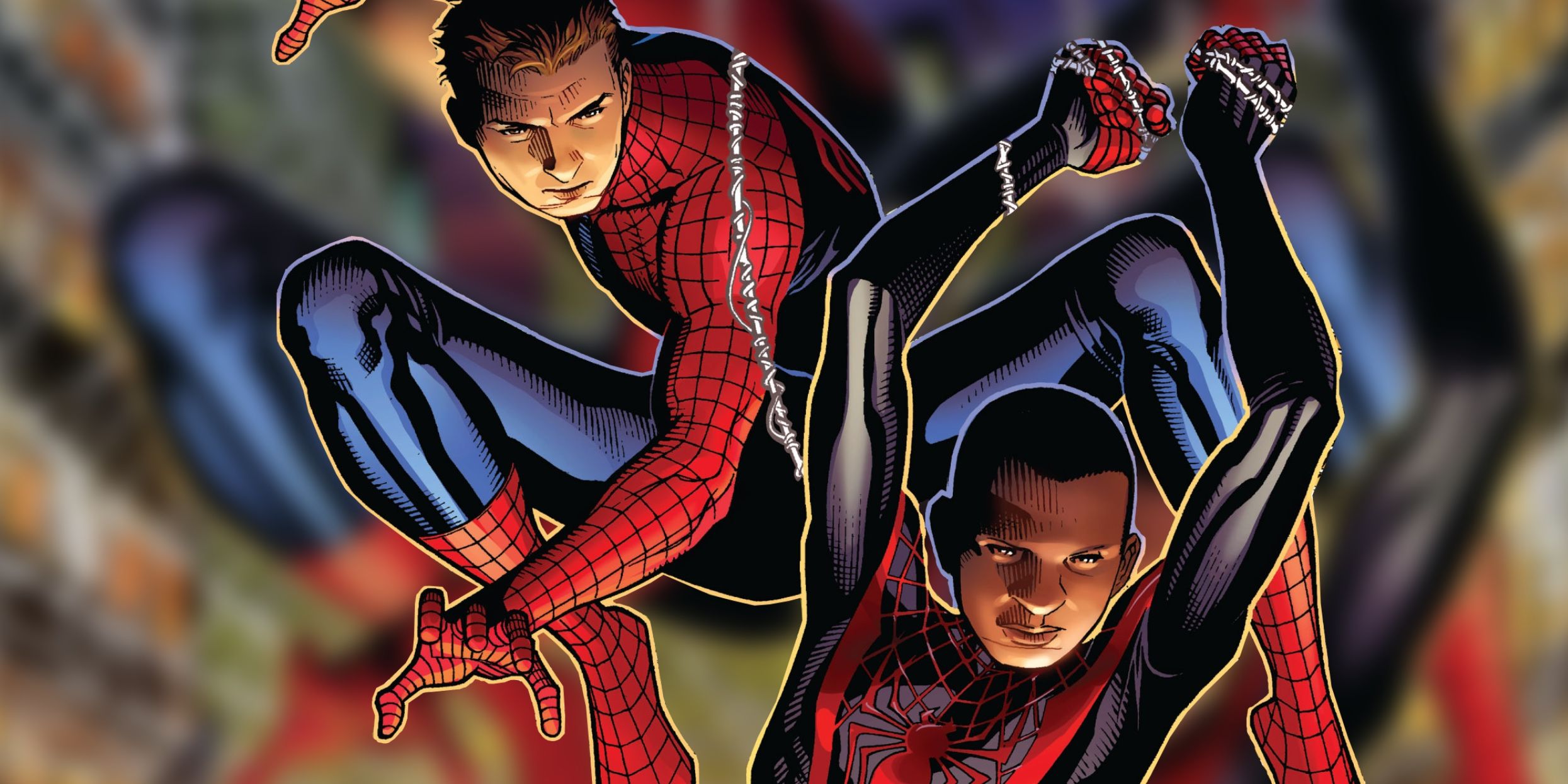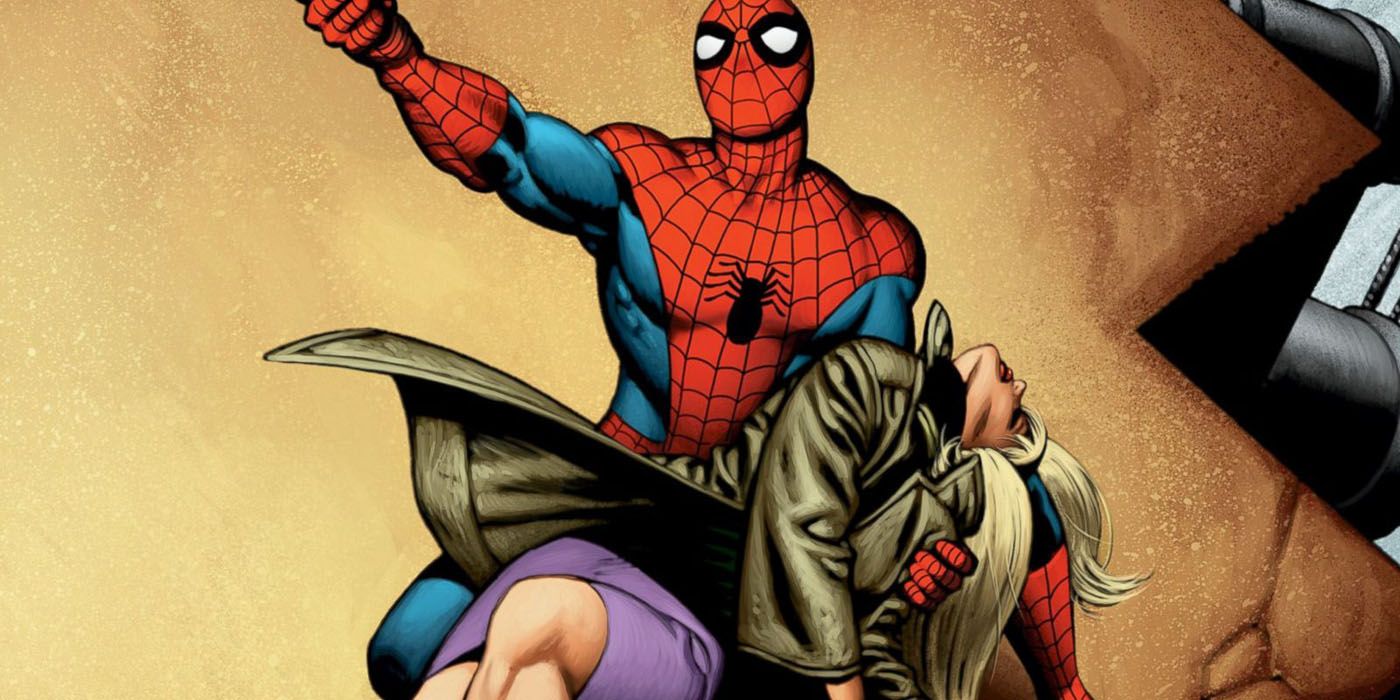Marvel's Spider-Man is one of the company's most popular characters, and in over 60 years of history, Peter Parker has changed many aspects of his life. While Spider-Man is occasionally the subject of rewrites and retcons that routinely regress the character back to a previous state, numerous elements have been added over the decades that advanced the wallcrawler's story forward. Below is a list of the five biggest changes to Spider-Man's character and mythos since his debut 60 years ago in Marvel Comics, and many of them are subtle yet more meaningful than they initially appear.
Stan Lee's most popular creation began with the debut of Amazing Fantasy #15 in 1962, in which a young Peter Parker, angry at the world for constantly bullying and manipulating him, obtains spider powers through sheer luck. He initially is self-serving and selfish, and lets a burglar pass him by just to spite others (and because from that moment on, he vows to "look after Number One - and that's me!" Unfortunately, the burglar kills Uncle Ben in a robbery gone wrong, and Peter realizes he's the one responsible, inadvertently or otherwise, for his uncle's death.
For the purposes of this article, only the 616 version of Peter Parker will be examined and not his many variants. Additionally, the Peter Parker from the spin-off media, including the Spider-Man Sony films, books and video games are not included below. Spider-Man has admittedly changed in other media as well, but games, TV shows and book obtain their material from the comics, so those will be the primary source examined.
Graduating College (After Ten Years)
When he was first created by Stan Lee and Steve Ditko, Spider-Man was created as a teenage superhero and not a sidekick to the actual hero. Part of Lee's conceit for the character was a constant struggle between the perils of being a superhero and the daily routine of attending school. Perhaps because of this, Marvel editors were quite reluctant to move Peter away from an educational environment of any kind. While Peter finally left high school only a few years after his debut, he only graduated college an entire decade later in Amazing Spider-Man #185 in 1978.
The subsequent stories in the 80s and 90s finally allowed Peter to grow up in the most dramatic and adult stories yet. Peter often struggled with jobs and had difficulties maintaining his social life even more so than before. His proposal and wedding to Mary Jane in 1987 was a watershed moment for the character, and the death of Aunt May in Amazing Spider-Man #400 portrayed one of the tragic but inevitable aspects of becoming an adult: the loss of a parent or guardian. While Spider-Man's marriage and the death of Aunt May were both retconned out of existence, the hasty fixes by Marvel editorial does not take away the feelings that fans experienced when reading those stories for the first time.
Allies, Friends And Team-Ups
At the beginning of Spider-Man's career as a superhero, he was entirely alone; unlike the vast majority of other heroes, Peter Parker had absolutely no other allies in his corner. For years, not even his closest friends knew his secret identity (and, rather tragically, Gwen Stacy died without ever knowing that her boyfriend was one of Earth's most famous superheroes). Also, Spider-Man was not on any superhero teams (and frequently fought against heroes and antiheroes himself, including the Punisher who debuted in the Spider-Man series).
Today, Spider-Man is known for teaming up with just about every Earth-bound superhero in the Marvel Universe (and even some from beyond the planet). He has acted as a member of the Avengers, the Defenders, the X-Men, the Fantastic Four and many more. Spider-Man's popularity equals and perhaps even eclipses Wolverine in both the Marvel Universe and the real world; he is considered a friend to nearly the entire superhero community. He is rarely excluded from team-ups or crossover events (and he's usually a focal point of many; see the Judgment Day and Devil's Reign events to see Peter play major roles in each).
Rise Of The Spider-Verse
Prior to 2014, Peter Parker was usually characterized by just how alone he felt in his life as the sole Spider-Man in the Marvel Universe. Outside of several rare exceptions - his 90s-era clone Ben Reilly and Miles Morales being two - he appeared to be the sole recipient of spider-based powers. Moreover, the immense sense of guilt he felt for inadvertently allowing his Uncle Ben to be murdered was overpowering at times, and Peter believed he had to bear this burden alone (either because he believed he had to, or he thought asking for help would be yet another way or shirking his responsibility).
The 2014 Spider-Verse crossover changed his entire worldview as Peter was suddenly surrounded by other variants of himself, all having gone through similar struggles. Notably, the crossover introduced dozens of Spider-Men from parallel realities who are still popular today (Spider-Man Noir, the guitar-wielding Spider-Punk and Spider-Ham among them). The popular Spider-Verse has now become a cornerstone of the Spider-Man mythos, and Peter usually runs into a variant or two every year. It doesn't hurt that one of those variants is Gwen Stacy, albeit playing the heroic role in her universe instead of Peter Parker.
The Student Becomes The Teacher
When Spider-Man first began his career as a superhero, he was one of the few teenage superpowered individuals in comics. Though members of the X-Men were also around his age, they attended Professor Xavier's school for the specific purpose of learning about their powers, and Peter Parker was frequently alone. He would, however, learn from the best in the business, and older characters such as Captain America, Iron Man, and Doctor Strange would give him advice about being a superhero - and more crucially, about balancing his social life with his life as a crime fighter.
But even a character as young as Spider-Man would eventually grow up, and as Peter Parker left college, he would find himself in the role fo the mentor. This was most apparent when Miles Morales appeared in the prime 616 Marvel Universe; he was still in high school while Peter was most often written to be in his mid to late-20s. Far from being jealous of the new webslinger's abilities, Peter would often team up with Miles (most recently in Judgment Day) and offer advice accordingly. Despite fans' insistence that Marvel refuses to let Peter grow up, he certainly is capable of passing what he learned to the next generation of heroes.
Learning From His Ultimate Failure
Prior to 1973, superhero comics came with certain expectations: the villains would always be defeated, the status quo would be maintained, and the love interests would always be saved. Spider-Man saved Gwen Stacy, Mary Jane and his numerous other significant others again and again, and fans had no reason to question this regularity. Then came the infamous Amazing Spider-Man #121 written by Gerry Conway, and everything in Spider-Man's life - and the lives of all superheroes - changed forever.
Gwen Stacy's death at the hands of the Green Goblin was quite shocking at the time, but the most important aspect of the story occurred in the months and years that followed. Unlike virtually every other major love interest who was killed by a supervillain, Gwen Stacy did not resurrect, despite the many fans clamoring for her return. Over 50 years after her death, Gwen Stacy appears in alternate universes and time-travel narratives from time to time but never the "prime" 616 universe, and her death impacted Spider-Man to such a degree that he was rarely so cavalier about saving lives again, be they strangers or loved ones, ever again.
While fans of the character may lament the lack of changes to Spider-Man over the years, the ones that stuck are quite substantial in their own right. Peter Parker works as a character because nearly everyone on Earth can identity with him: his many mistakes and desire to atone, his struggles to pay rent and maintain relationships, and his quest to continually perform good deeds in a world were few respect his actions. Spider-Man endures because life is a constant struggle for many, and while there is an element of escapism in reading comics, reading about a superhero who experiences problems like the rest of us can be equally comforting.

-Featured.jpg)
